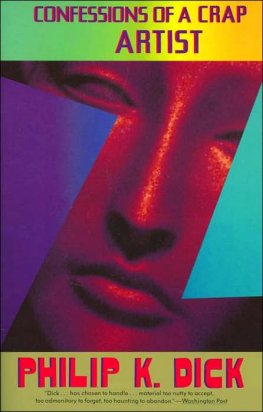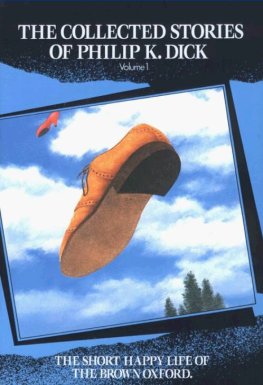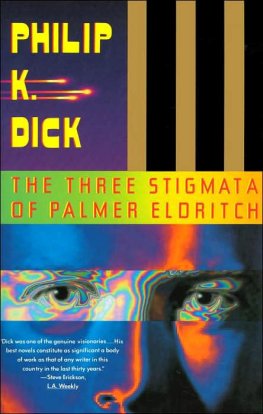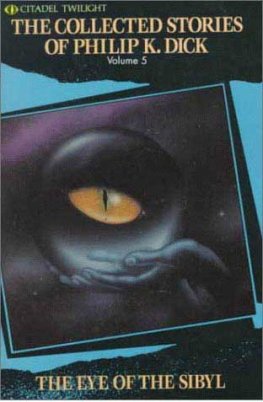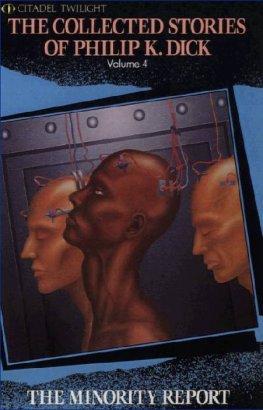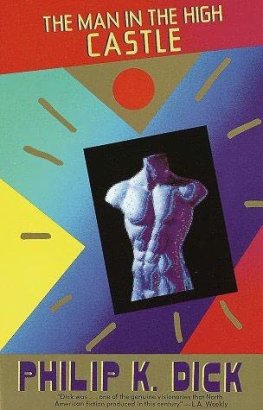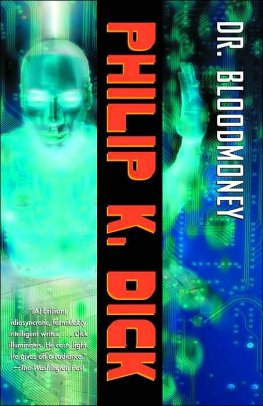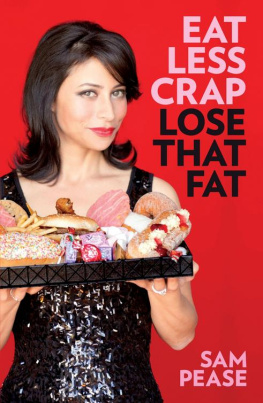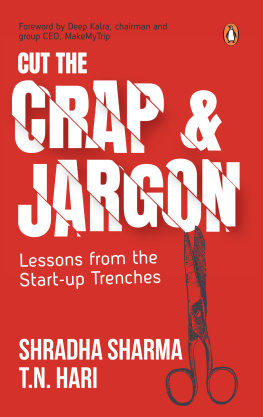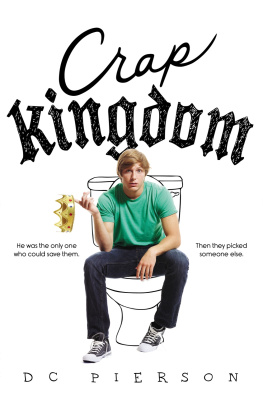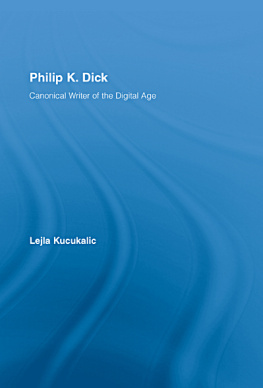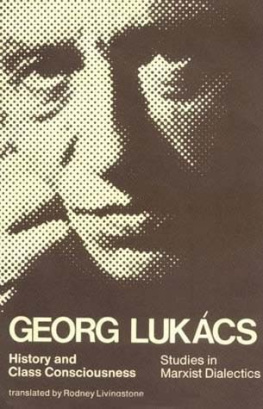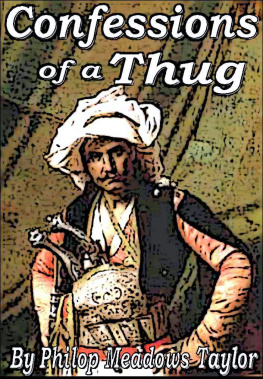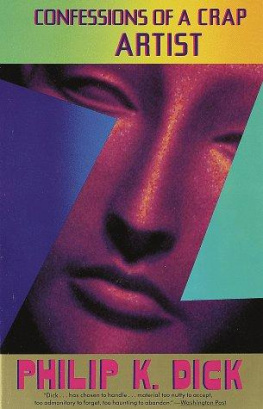Confessions of a Crap Artist
by Philip K. Dick
To Tessa,
the dark-haired girl who cared about me when it mattered most; that is, all the time.
This is to her with love.
Introduction
by Paul Williams
Confessions of a Crap Artist was written in 1959. It is a tour de force, one of the most extraordinary novels Ive ever read. There are, I believe, two essential reasons why it has taken Philip K. Dick sixteen years to get this novel published. The first reason is the intensity of the picture the author paints. This is the sort of book that makes editors shiver with (perhaps unconscious) revulsion, and leaves them grasping at any sort of excuse (I dont like the shifting viewpoint) to reject it and get it out of their minds. The people are too real.
The second reason is that it is a mainstream novel written by an author who had already established himself as a fairly successful science fiction writer. It is easier for a camel to go through the eye of a needle, than for a science fiction writer to be accepted as a serious novelist when hes not writing science fiction.
Philip K. Dick was born in 1928. He began writing professionally in the early 1950s, and although he steadily submitted short stories and novels to mainstream publishers as well as science fiction markets throughout the 1950s, it was only as a science fiction writer that he was able to get into print. His first short story appeared in The Magazine of Fantasy & Science Fiction in 1952; his first novel, Solar Lottery, was published by Ace Books in 1955. Since then, he has had thirty-one other books published in the United States, all of them science fiction.
Despite Dicks considerable popularityin North America and especially in Europe (where over 100 different editions of his books are in print)Confessions of a Crap Artist is the first non-science-fiction book by Philip K. Dick that has ever been published. It is one of at least eleven experimental mainstream novels (his term) that Dick wrote during the first ten years of his professional career.
Confessions is experimental only in that it was written without regard for novelistic conventions. Dicks value as a writer lies in his unusual and unusually vivid perceptions of the world we live in and the way people behave, especially the way they behave towards each other. These perceptions dictate the form and substance of his novels. In this case, the story is told in the first person by each of three different characters, in different chapters; there are also sections where third person narrative is used. This is unusual, but it works; those few novels of Dicks where he has tried to shoehorn his perceptions into a novelistic structure that did not originate within himself do not work half as well. Dicks books are uniquely structured, not out of self-conscious experimentation in the manner of writers who are aware of themselves as part of some avant-garde movement, but out of simple necessity.
Dick made some fascinating comments about his attitude towards writing in a letter to Eleanor Dimoff at Harcourt, Brace and Company, written February 1st, 1960, at a time when Dick was most actively engaged in trying to market his mainstream novels:
Now, I dont know how deeply to go into this, in this letter. The intuitiveI might say, gestaltingmethod by which I operate has a tendency to cause me to see the whole thing at once Mozart operated this way. The problem for him was simply to get it down. If he lived long enough, he did so; if not, then not. In other words, according to me (but not according to you people) my work consists of getting down that which exists in my mind; my method up to now has been to develop notes of progressively greater completeness If I believed that the first jotting-down actually carried the whole idea, I would be a poet, not a novelist; I believe that it takes about 60,000 words for me to put down my original idea in its absolute entirety.
Philip K. Dick has three particular talents that have allowed him to not only put down his visions but to bring them to life: his ability to create believable, sympathetic characters; his sense of horror; and his sense of humor.
Confessions of a Crap Artist is the story of four people who live in and perceive very different universes but whose lives get hopelessly tangled together through the usual combination of destiny, accident, and their own deliberate actions (stress on the latterthe novel is at its most acute in the scenes where each character assesses his own situation and then deliberately acts in such a manner as to dig himself deeper into the pit). Jack Isidore, the crap artist of the title, is a simple-minded lost soul, fascinated by bits of information and incapable of distinguishing fact from fantasyseeing the world through his eyes is a bizarre, unforgettable experience. He is not an idiot in the tradition of Faulkners and Dostoievskis famous idiots; his idiocy is close enough to our normalcy to scare us.
Fay Hume, Jacks sister, is an intelligent, attractive, hopelessly selfish woman, married to a beer-drinking, inarticulate regular guy named Charley Hume who owns a small factory in Marin County. They live in an absurdly non-functional modern house in Point Reyes, a rural outpost several hours north of San Francisco, with two daughters and some livestock and an incredible electric bill. Charleys purpose in Fays life seems to have been to build her this dream house; that done, he withers in her eyes and she turns her attention to a young married man named Nathan Anteil. Nathan is a true intellectual, a law student; he spots Fay for what the is immediately, but is drawn to her anyway. Why? He doesnt know; perhaps even the author doesnt know; he only knows that its true, this is the way people are.
And the story is disturbing, hilarious, and utterly believable because the reader, too, cant help recognizing the truth when he sees it, however crazy it is. Charley attacks his wife because she makes him buy Tampax; its ridiculous, but who among us can fail to see the sanity underneath Charleys madness? Who can fail to identify with Fay in her moments of self-realization, such as the following soliloquy? Its funny, of course; but its too accurate not to also be painful:
Almost at once I felt, acutely, that I was a hysterical nut. They shouldnt trust you with the phone, I said to myself. Getting up from the bed I paced around the bedroom. Now itll get all over town, I realized. Fay Hume calls up some people in Point Reyes and raves like a drunk. Thats what theyll say: I was drunk. Sheriff Chisholm will be by to take me away. Maybe I ought to phone him myself and eliminate the middleman.
The reality of Philip Dicks characters stems quite simply from the fact that they are real to him; he hears them talking, in his mind, and records their conversations and thoughtshis dialogue, in almost all of his novels, is excellent. He is especially good at capturing the interactions between people; the authenticity of his work lies not so much in what people say as in how they respond to each other. In a conversation in 1974, Dick told me, Well, the idea of a single protagonist, I never could understand that too well What Ive felt is that problems are multipersonal, they involve us all, theres no such thing as a private problem .Its only a form of ignorance, when I wake up in the morning, and I fall over the chair and break my nose, and Im broke, and my wifes left meIts my ignorance that makes me think Im an entire universe and that these miseries are my own and theyre not affecting the rest of the world. If I could only look down from a satellite, I would see all the world, everybody getting up and, in some analogous way, falling over a chair and breaking something.
The humor in the novel, in everything Dick says and writes, is self-evident (I stood in the middle of my room doing absolutely nothing except respiring, and, of course, keeping other normal processes going). Dick writes from the center of some vast despair that is, however, never final; the reverse of cynicism is at work here. No matter how miserable and absurd his characters actions and thoughts are, Dicks attitude toward his characters is always, finally, sympathetiche loves and understands them, his books affirm a faith and affection for humanity, in spite of all our idiocies. The result is somehow comic. In

